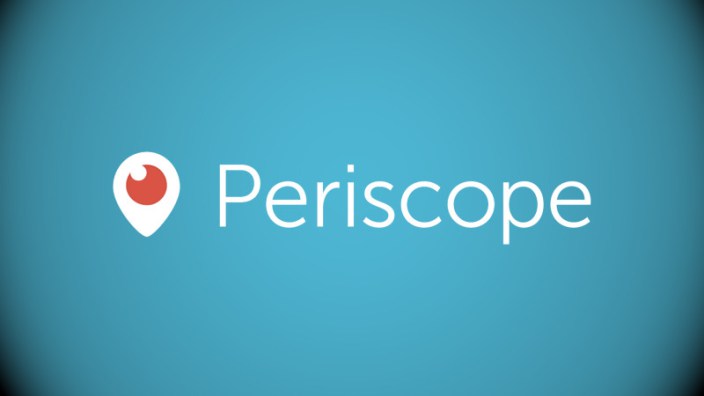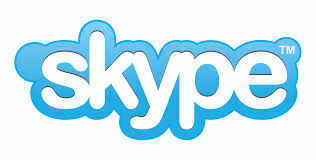Recent events over the past couple of weeks have caused a paradigm shift for many workers and educators and how we interact with our peers and/or students.
I’m here to tell you that it doesn’t have to be any harder than it needs to be — we all have important things on our mind. Let’s not make communication and instruction any more difficult.
For a starting point, here are some easy-to-use and FREE apps to get you working. Your employer or institution may already have a preferred platform — go with it — if it works for you.
I’m not a fussy guy with my instruction — I like face-to-face (F2F) interaction for an experiential environment for my students, and I prefer that at any given opportunity for teaching.
As a journalism instructor and student media adviser, I think F2F gives both student and instructor immediacy on a level that online can’t always give. Online instruction has always been a relatively asynchronous for my classes — so I’m in the same boat with you.
How do I make my online class resources synchronous?
My first step is to establish a virtual classroom. My classes already have a Google G-Suite and my institution, Lamar University provides Blackboard as a digital resource for all classes.
However, there is no live streaming component to Blackboard available to all instructors — those that do use Adobe Connect.
My students nor I want to rebuild the wheel — we’re going to use free, stable apps most of us already have access to.
I will probably experiment more than once with what app I will center my class on, but here are the ones I’m going to choose from (as of now anyway).
All of these are free to download from the Android and iOS stores.

Facebook
It is the primary app the staff at the University Press (UP) uses as a work chat. To use Facebook Live is a no-brainer, to me, to use —Most students already have a Facebook account and, in the case with the UP — all of our students are already members so there is no need to repopulate any lists.
Facebook Live, lets users share what is happening in front of them the moment it’s happening. You can host a dedicated page and broadcast from their mobile device, laptop or desktop computer. Facebook Live lets you choose your audience, receive real-time feedback in the comments section of your stream, and track how many viewers your livestream brought in at various points and user can choose video or audio only settings.
Facebook Live is an easy to use livestreaming tool that is great for event planners looking to jump right into streaming without the complexities of traditional livestreaming platforms. And your content is saved and can be used as legacy material for your page as long as you want it to.
I also chair a local non-profit arts organization and we use Facebook Live with board members to virtually attend our monthly board meetings. It works great because we also have an institutional page and a separate board page — two different channels to broadcast on if we choose.
I’m going to throw in Instagram Live here (it’s owned by Facebook). Most of my students use Instagram and Twitter more than Facebook, so it’s worth mentioning. It’s easy to use — however videos are only temporary and appear for 24 hours, so if you’re wanting to use it for later, it won’t be available.

Products like Hangouts and YouTube Live both are free tools offered to all Google and YouTube — they are both popular and easy to use. Once you go live, anyone with the link can view your livestream.
Other features include viewing invitations, chat room capability through live comments, and event scheduling.
This platform is good for livestreamers looking for a simple setup with a massive audience potential thanks to YouTube’s video streaming market share. YouTube has other options that include monetization capabilities — that’s another post in itself.
Hangouts is the easier of the two to use. If you use a G-Suite or Google Classroom, Hangouts is easier to incorporate.

Periscope
It’s an app that lets users share and experience live video streams direct from mobile devices. It can be used to capture the atmosphere among fans at an important match, to broadcast an unfolding news story or to experience what it’s like to walk down the streets of Houston or China.
The immediacy of the app encourages viewers to participate in what’s happening in the video. Viewers do this by sending comments, which the person sharing the video can respond to in real time. This feature of Periscope makes for a much more active viewing experience, compared with more traditional ways of experiencing video. It is now owned by Twitter and incorporates easily with minimal fuss.
Honestly, I don’t know too much about this one, but several journalist friends recommend this for events.

Twitch
My son is a gamer and he introduced me to this platform several months back and I’ve seen it used more often. The arts organization I mentioned above has used this to livestream art exhibits and performances.
Twitch is a live streaming platform for gamers. Non-gamers may not see the appeal of watching other people play video games, but with 15 million users everyday Twitch is hugely popular.
The primary focus on Twitch is video games. Users can watch other people playing games, interact with other viewers, or live stream their own gameplay to the world. Lots of different games are streamed, with popular titles such as Fortnite, Teamfight Tactics, League of Legends, and Grand Theft Auto V being among the most watched.
Streamers also have the potential to earn money through subscriptions and Twitch partnerships. The platform’s biggest star ‘Ninja’ has more than 11 million followers, and reportedly earns over $500,000 per month.

Zoom
Video conferencing software is the cornerstone of any successful and productive team. Video conferencing tools, like Zoom, allow individuals to meet and work together productively “face-to-face” when meeting in-person isn’t possible. This makes meeting remotely much more human, which essential in order to help users feel and stay connected.
Zoom has a free version, along with several pay tiers for advanced users.

Skype
It’s the grand-daddy of video calling software and is the most popular video calling platform that allows users to speak to, see and instant message other people who have Skype accounts wherever they are in the world. It is a free application which allows user to make calls and send messages via the internet. Many people use their computers for Skype, but phone and even TVs can be used.
Skype has created dedicated classroom resources that include free group video calling and a collaborative community that connects teachers with educators and guest speakers from around the world with website tools to find and run lessons or to create their own.
Google education resources
Creating an online environment with Google

